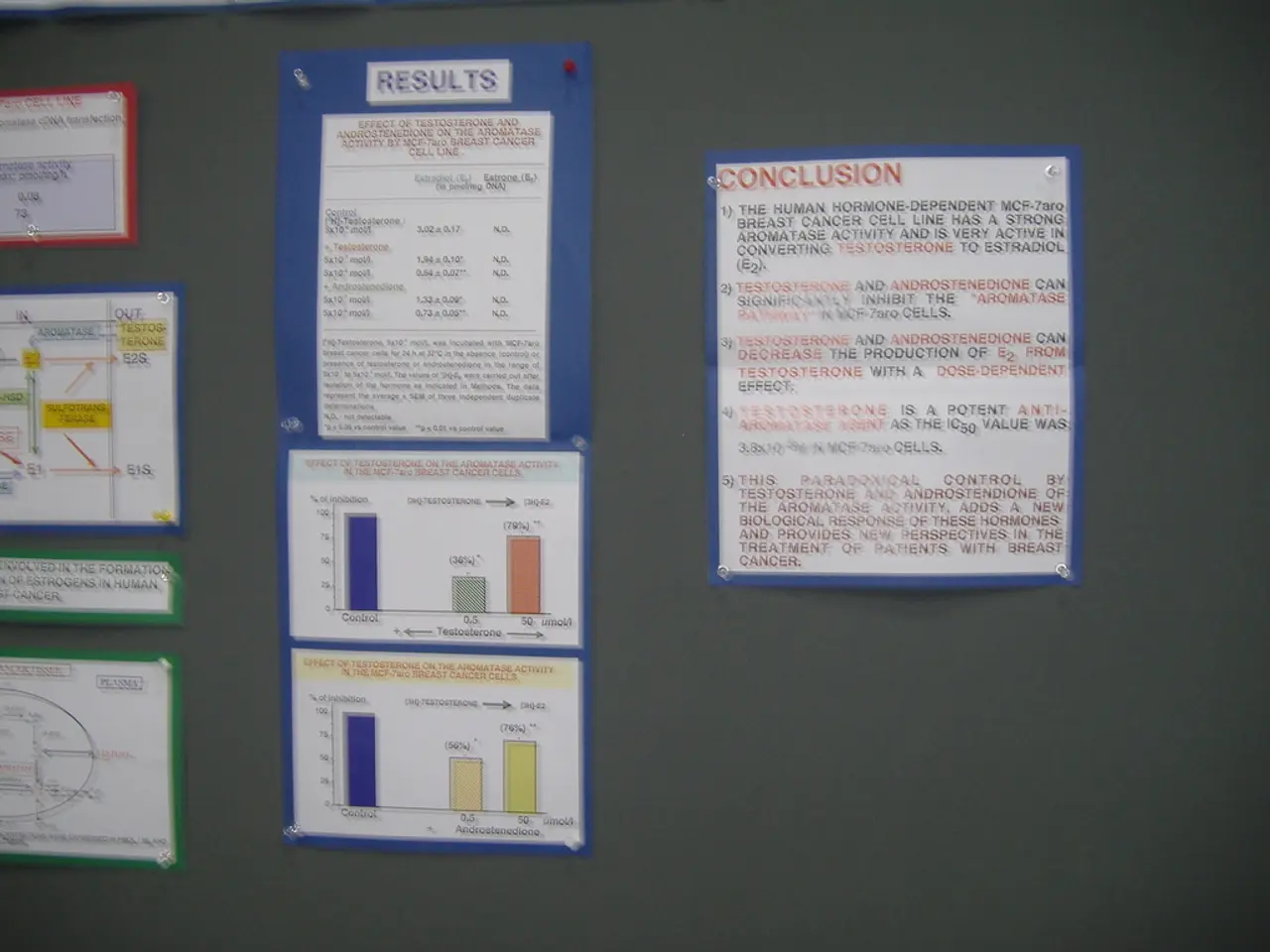Strategies for Putting Money into Assets in Anticipation of a DROP in Federal Reserve Rates
The Federal Reserve's primary monetary policy tool, the federal funds rate, is currently within a range of 4.25% to 4.50%. However, recent indications suggest a potential shift, with the CME Group's FedWatch tool showing a 41.3% chance of a 25 basis points rate cut.
In a falling-interest-rate environment, growth stocks, particularly tech, small-caps, and other companies dependent on expectations of future earnings, tend to benefit most. This is because lower rates make borrowing cheaper for companies, boosting economic activity and corporate profits. As a result, tech stocks and small-cap stocks, as well as other high-growth sectors, may get a tailwind when the Fed starts cutting interest rates again.
The impact of lower rates extends to the bond market as well. Fixed income securities have prices that move inversely to interest rates. When rates decline, bond prices generally rise, increasing the value of existing bonds and bond ETFs. However, short-term rate cuts might have limited impact on long-term yields, which are influenced by inflation expectations and other factors, possibly keeping longer-term rates near current levels despite Fed cuts.
Savings accounts, money market funds, and Treasury bills may offer slightly lower yields in a steepening yield curve, where short-term yields fall and long-term yields rise. This trend, while benefiting long-term bondholders, reduces income earned by conservative investors from these safe options, often encouraging them to seek higher returns in riskier assets like stocks and bonds.
Exchange-Traded Funds (ETFs) tied to stocks, especially growth sectors, may benefit from lower rates through higher underlying asset prices. Bond ETFs gain when rates fall as bond prices rise. However, the impact depends on the types of bonds and equities held within the ETF. For example, ETFs with long-duration bonds are more sensitive to rate changes. Investors often use ETFs to diversify exposure amid interest rate shifts.
A more accommodative Fed is generally good for the stock market. Lower interest rates stimulate economic growth, which boosts corporate earnings. This growth, in turn, tends to increase stock prices, especially benefiting growth stocks such as tech and small-cap companies that rely on future earnings and external funding. Additionally, as bond yields fall, stocks become more attractive by comparison, leading to capital inflows into equities.
However, it is essential to note that the overall impact varies by investment type, sector, and broader economic conditions like inflation and fiscal policy. For instance, a steepening yield curve, where short-term yields fall and long-term yields rise, may temper stock gains if long-term rates rise independently or if rate cuts occur amid a weakening economy.
Following the July jobs report, odds of interest rates being lower after the next Fed meeting jumped to 80.8%. However, after the Fed's decision, odds of a rate cut in September dropped below 50%. Despite this, the target range for the fed funds rate is likely to be lowered by the end of the year, providing a potential boost to equity markets and bond prices.
In the context of a potential interest rate cut by the Federal Reserve, growth stocks, particularly tech and small-cap companies, may experience growth due to cheaper borrowing costs. This is because lower rates boost economic activity and corporate profits, benefiting such stocks.
Moreover, exchange-traded funds (ETFs) tied to stocks, especially growth sectors, can benefit from lower rates as their underlying asset prices tend to rise, potentially increasing the value of these ETFs.




